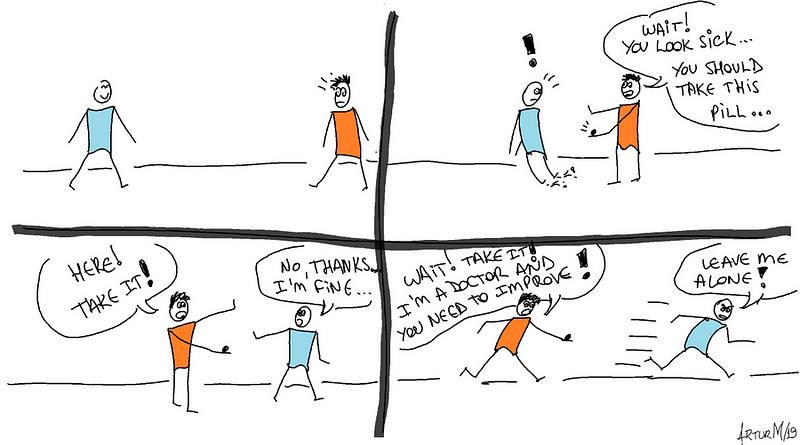Incremental Changes
This week I observed a great example of approaching work with an Agile mindset. Within our office we have a number of electronic displays which show desk availability on each floor, as well as room names/locations. John Cowx, one of our Experience Design team, showed to me an incremental change they had made this week, introducing a single touch screen for one display on one floor which would allow staff to interact, type in a room name and then have a route plotted to the room to show them the way. This is a great example of an Agile mindset to work, as rather than roll this out through every single screen across every single office across the country, here we’re piloting it (small batch) and observe the interactions/obtaining feedback, before making changes and/or deciding whether or not to scale it across all locations (inspecting and adapting). It was great to not only see someone so passionate about the product, but to see an example of the Agile mindset being evidenced in the work we do.
Retrospectives
This week we were having a conversation around the Continuous Improvement initiative being run in IT and encouraging people in our ‘Project’ model to conduct retrospectives, regardless of delivery approach (then taking any wider improvements identified in the retrospectives into the initiative to implement). It’s something that has been running for a while with limited success as, generally, the observations are people aren’t conducting Retrospectives or the improvements being implemented are low hanging fruit rather than anything meaningful of impact. The former doesn’t really surprise me, even with using our team to provide lots of guidance, templates and lunch & learns. For me it’s clear that people don’t want to use retros (which is fine), therefore we need to learn from that feedback and change direction, rather than continuing to push the retrospectives agenda, as otherwise we can end up falling into the trap below:

Imposition of Agile
It’s perfectly reasonable to see that people can continuously improve without doing retrospectives but more importantly, it’s to recognise that doing retrospectives != continuously improving. I’ve suggested the group conduct some end user interviews/field research to understand why people are struggling with retros and also around what they see the purpose of the initiative as. Possibly there could be an unearthing from that around what the real improvements are that are needed, rather than relying on the retrospectives as the mechanism to capture them.
TLDR; individuals and interactions over tools and processes
Training
It was back to the training rhythm this week, running a half day session on Wednesday as part of our Hands On With Azure DevOps course. Given it had been so long since running any type of training, I found myself a little bit rusty in parts, but generally thought it went well. Dan from our team was shadowing, so we can reduce the single point dependency in the team of only myself running the session. This was really good from my perspective as there are certain nuances that can be missed, which he was there to either point out to attendees or to ask me about. Having started doing the session months ago it finally feels like now the content flows nicely and that we give a sufficient learning experience without teaching too much unnecessary detail. My favourite point is the challenge on configuring the kanban board, as normally there are a lot of alarmed faces when it’s first presented! However they all end up doing it well and meeting the criteria, which is of course a good indicator that attendees are learning through doing. There is only one slot available across all sessions in the next four months, so please that demand is so high!
Next Week
Next week it’s back to running Agile Foundations courses — with myself and Stefano running a session on Tuesday. I’ll also be working with Andy from our team on presenting at a BXT Jam on Wednesday night, with a 30–45 minute slot introducing people to Agile. A few slides plus the ball point game is our planned approach, hoping it can scale to 40 people!
